Welcome to the Influencer Marketing Guide 2025! In this ultimate guide, we’ll explore how influencer marketing continues to transform digital strategies, helping brands connect authentically with their audiences.
In the dynamic world of digital marketing, staying ahead of the curve is paramount. As we step into the year 2025, influencer marketing remains a dominant and continually evolving force that demands attention. Influencer marketing is no longer a buzzword; it’s a cornerstone of modern marketing strategies, transforming the way brands connect with their target audiences.
In the following sections, we will delve into the very essence of influencer marketing, uncovering the driving forces behind its success, the myriad ways it’s used, and the tools and techniques to harness its full potential. From the nitty-gritty details of finding the right influencers to predicting the future of this transformative industry, this guide is your roadmap to navigating influencer marketing in 2025 and beyond.
What Is Influencer Marketing?
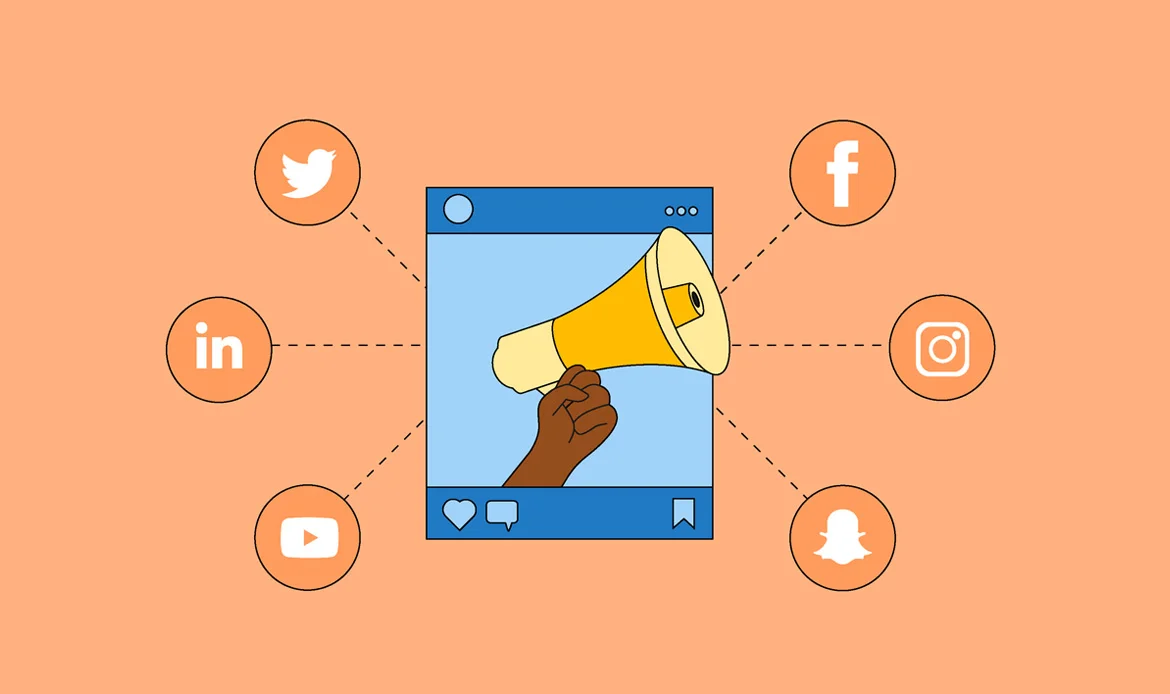
Influencer marketing is a powerful and dynamic digital marketing strategy in which brands collaborate with individuals who possess a substantial and engaged online following, often across social media platforms, blogs, YouTube channels, and more. These individuals, known as influencers, have the ability to significantly impact the purchasing decisions of their followers due to their credibility, authenticity, and expertise within specific niches.
The practice of influencer marketing has evolved from traditional celebrity endorsements to encompass a broader spectrum of individuals who have cultivated trust and authority within niche communities. Influencer marketing is effective because it enables brands to reach a specific and engaged audience authentically. Influencers are trusted by their followers, who value their recommendations and opinions. The benefits of influencer marketing include increased brand awareness, trust and credibility, improved search engine optimization (SEO), and lead generation.
The Evolution of Influencer Marketing
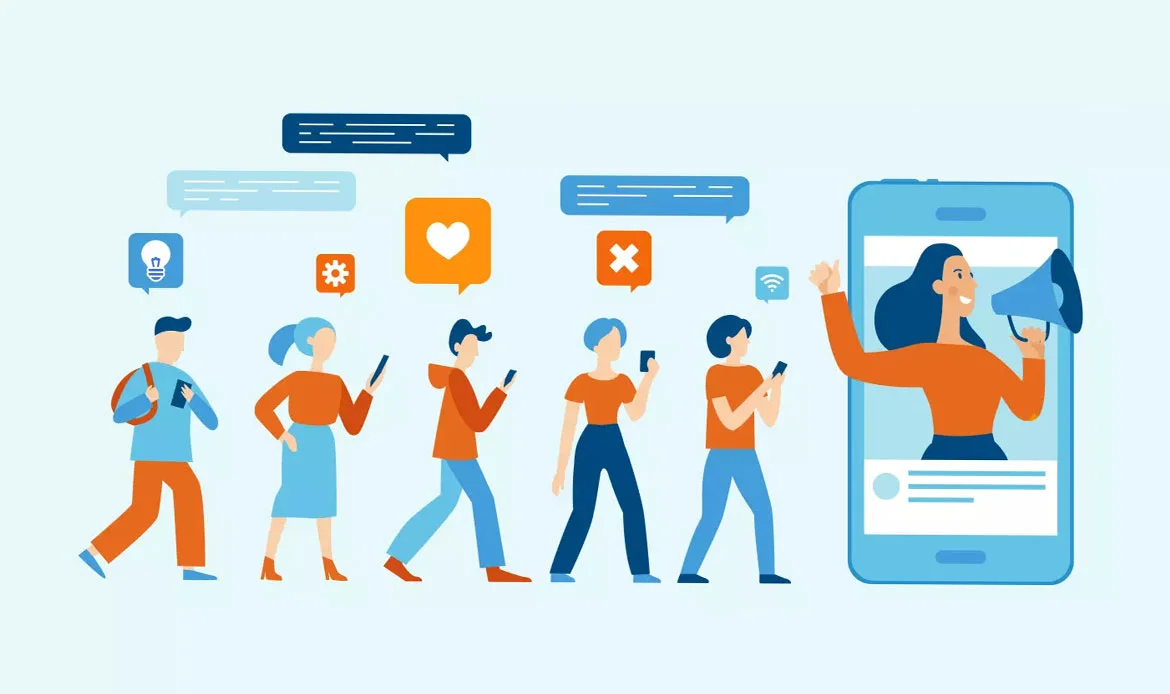 In the fast-paced world of digital marketing, influencer marketing has transformed from a modest strategy into a dynamic force that’s reshaping brand-audience engagement.
In the fast-paced world of digital marketing, influencer marketing has transformed from a modest strategy into a dynamic force that’s reshaping brand-audience engagement.
Emergence of Early Influencers:
Early internet enthusiasts, such as bloggers and forum administrators, laid the groundwork for influencer marketing, catering to niche interests and fostering dedicated followings.Rise of the Social Media Era:
The advent of social media platforms, like Facebook, Instagram, Twitter, and YouTube, empowered individuals to amass sizeable, engaged audiences. These pioneers shared personal experiences and expertise, becoming digital peers.Shift from Celebrity to Niche Influencers:
The spotlight shifted from celebrities to niche influencers with smaller but highly engaged followings. Micro and nano-influencers thrived, emphasizing trust and relatability.Authenticity as the Driving Force:
Authenticity became a hallmark, with transparency and genuine connections at the core of influencer marketing’s success.Regulations and Ethical Considerations:
Regulatory bodies enforced guidelines, leading to transparency and disclosure regulations to maintain trust and credibility.Advancements in Technology:
Technology, like AI-driven influencer matching and analytics tools, streamlined influencer marketing.Expansion of Content Formats:
Video content, especially on platforms like YouTube and TikTok, flourished, deepening influencer-audience connections.Long-Term Partnerships:
Brands embraced long-term influencer partnerships, recognizing the value of authentic, sustained connections with their audiences.The Future:
AI and Ethical Practices: The future promises AI-driven influencer matching and a commitment to ethical and sustainable influencer partnerships.
Influencer marketing’s evolution has been a journey from early internet enthusiasts to authenticity-focused niche influencers, from celebrity endorsements to long-term partnerships. This dynamic evolution will continue, adapting to the changing digital landscape while preserving authenticity and trust.
Types of Influencers
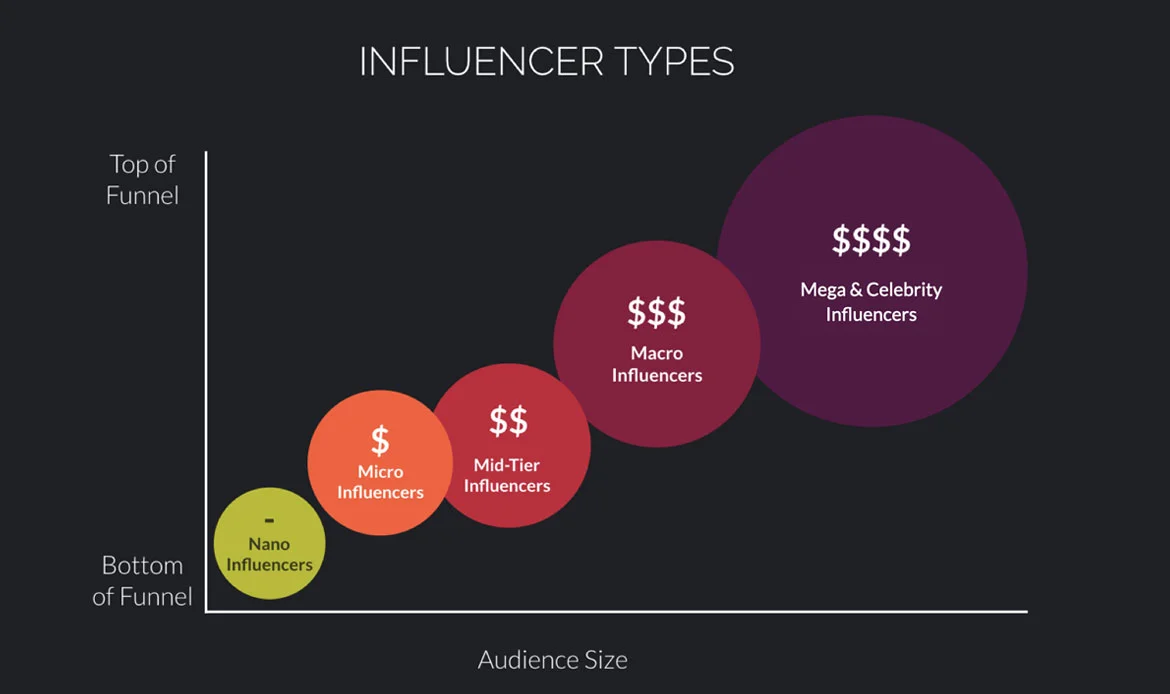 Influencers come in various shapes and sizes, depending on their follower count and niche. Common categories of influencers include:
Influencers come in various shapes and sizes, depending on their follower count and niche. Common categories of influencers include:
- Mega-Influencers: These are celebrities or individuals with a massive following, often in the millions.
- Macro-Influencers: Typically, they have hundreds of thousands of followers and focus on specific niches or interests.
- Micro-Influencers: Micro-influencers have smaller followings, but their audiences are highly engaged, making them valuable for niche marketing.
- Nano-Influencers: Extremely niche-focused, nano-influencers have a small but dedicated and highly targeted following.
Why Is Influencer Marketing Effective?
Influencer marketing’s effectiveness lies in its ability to reach a targeted and engaged audience authentically. Followers trust influencers and value their recommendations, making influencer marketing a powerful tool for driving conversions.Authenticity & Trust:
Influencers are trusted in their niches, lending authenticity to endorsements.Targeted Reach:
Influencers attract specific, engaged audiences, enhancing engagement and conversions.Social Proof:
Followers trust what influencers use and endorse, providing validation.Content Quality:
Influencers create high-quality, engaging content, boosting brand appeal.Native Advertising:
Seamlessly integrated content feels less intrusive, maintaining audience experience.Engagement & Interaction:
Influencers interact with followers, fostering community and participation.Effective Storytelling:
Influencers craft relatable narratives around products or services.Extended Reach:
Leveraging influencer networks expands content’s reach and impact.Diverse Platforms:
Influencers span various platforms, reaching audiences on different channels.Consumer Behavior:
Consumers seek recommendations from trusted sources; influencers fit the bill.SEO Benefits:
Influencer collaborations yield valuable backlinks, improving SEO.Access to Hard-to-Reach Markets:
Influencer marketing leverages these strengths to deliver credible, personalized messages, making it a vital strategy in the digital marketing landscape.
Benefits of Influencer Marketing
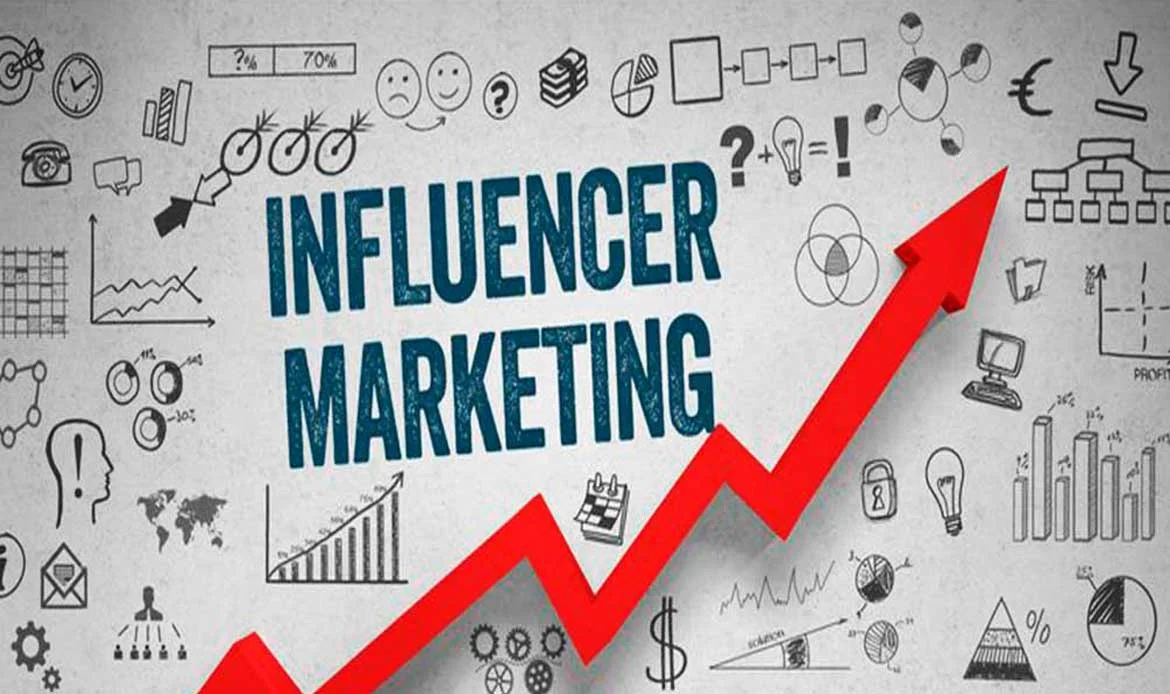 Some key benefits of influencer marketing include:
Influencer marketing offers a plethora of benefits for brands and businesses seeking to enhance their digital presence and engage with their target audiences effectively. Here are some of the key advantages of influencer marketing:
Some key benefits of influencer marketing include:
Influencer marketing offers a plethora of benefits for brands and businesses seeking to enhance their digital presence and engage with their target audiences effectively. Here are some of the key advantages of influencer marketing:
- Authenticity: Influencers are seen as trusted figures within their niches, providing authentic recommendations that resonate with their followers.
- Targeted Reach: By partnering with influencers whose audiences align with your brand, you can ensure that your message reaches a relevant and receptive market segment.
- Increased Brand Awareness: Collaborating with influencers exposes your brand to a wider audience, raising awareness and visibility.
- Engagement and Interaction: Influencers actively engage with their followers, fostering conversations, and creating a sense of community around your brand.
- Credibility and Trust: Influencer endorsements offer a level of social proof, enhancing your brand’s credibility and building trust with consumers.
- Content Quality: Influencers are skilled content creators, delivering high-quality and engaging content that captivates their audience.
- Diverse Platforms: Influencers can be found on various platforms, allowing you to reach audiences across social media, blogs, YouTube, and more.
- Improved SEO: Collaborations with influencers can lead to backlinks and mentions on influential websites, contributing to your search engine optimization efforts.
- Cost-Effective Marketing: Influencer marketing often provides a higher return on investment (ROI) compared to traditional advertising.
- Access to Niche Markets: Influencers often have dedicated niche audiences, enabling brands to reach specific market segments that might be challenging through traditional means.
- Elevated Conversions: Influencer endorsements can lead to increased conversions and sales, as their recommendations carry weight with their followers.
- Storytelling and Relatability: Influencers are adept at storytelling, crafting narratives around your products or services that resonate with their audience.
- Long-Term Partnerships: Establishing long-term relationships with influencers can result in sustained brand advocacy and loyalty.
- Measurable Results: With analytics tools, you can track the performance of influencer campaigns, enabling data-driven marketing decisions.
- Global Reach: Collaborating with influencers with a global following can expand your brand’s reach to an international audience.
- Social Responsibility: Influencers can help promote social responsibility and sustainability efforts, aligning your brand with ethical values.
- Consumer Insights: Collaborating with influencers provides valuable insights into consumer preferences and behavior.
- Event Promotion: Influencers can effectively promote events, product launches, and campaigns, driving attendance and participation.
Setting Your Influencer Marketing Goals
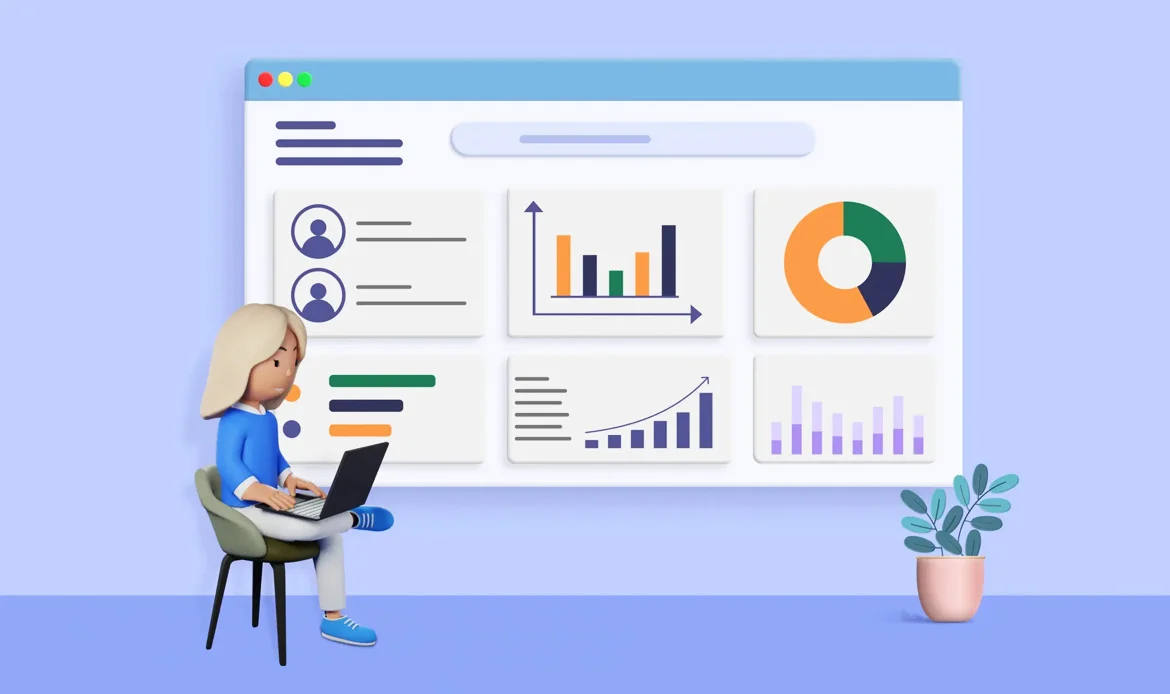 In influencer marketing, clear goals are crucial for success. Here’s how to define them:
In influencer marketing, clear goals are crucial for success. Here’s how to define them:
Brand Awareness:
The Influencer Marketing Guide 2025 emphasizes the importance of increasing visibility by collaborating with influencers who have a broad reach.Audience Engagement:
Enhance engagement by collaborating with interactive influencers. Track likes, comments, shares, and audience participation.Lead Generation:
Drive traffic to your website or offers with influencers. Measure click-through rates, website traffic, and conversions.Product Sales:
Boost sales with effective product promotion by influencers. Measure conversion rates, sales revenue, and ROI.Content Creation:
Get fresh content from influencers skilled in content creation. Assess content quality, consistency, and quantity.Community Building:
Build a community around your brand with influencers fostering discussions, Q&A sessions, and a sense of belonging. Measure community growth, engagement, and participation.Brand Loyalty:
Cultivate loyalty with dedicated influencers. Track customer retention, repeat purchases, and feedback.Educational Content:
Collaborate with influencers for informative content. Monitor views, shares, and engagement with educational materials.Event Promotion:
Drive event attendance and engagement with influencers. Measure sign-ups, ticket sales, and attendee engagement.Social Responsibility:
Promote social responsibility by partnering with influencers sharing ethical values. Monitor the impact of campaigns related to social and environmental issues.Product Feedback:
Gather valuable product feedback from influencers’ engaged audiences. Track feedback quantity and quality for product improvements.Influencer Relationships:
Build long-term relationships with influencers and assess their advocacy for your brand.Global Expansion:
Expand globally with influencers having international reach. Monitor growth in international followers, engagement, and market expansion.Content Variety:
Diversify content with influencers skilled in various formats. Track content variety and quality.Measurable ROI:
Establish specific financial targets and track sales, revenue, and costs for assessing campaign profitability.Consumer Insights:
Collaborate with influencers to gain insights into consumer preferences, behavior, and market trends.Event Coverage:
Engage influencers for real-time event updates and audience interaction. Monitor event attendance, live engagement, and post-event interactions.Milestone Celebrations:
Use influencers to create excitement around milestones like anniversaries, product launches, or achievements.
Ensure your influencer marketing goals align with broader marketing objectives, following the SMART framework: specific, measurable, achievable, relevant, and time-bound. This approach enables effective tracking and evaluation of your influencer campaigns.
Creating an Influencer Marketing Strategy
To succeed in influencer marketing, craft a comprehensive strategy:Define Campaign Goals:
Clarify what you aim to achieve—brand awareness, sales, loyalty, etc.Identify Target Audience:
Understand your ideal customer demographics, interests, and behaviors.Plan Content:
Decide on content style, format, messaging, and key points for influencers to convey.Choose the Right Influencers:
Select influencers whose niche, audience, and values align with your brand.Set a Budget:
Allocate funds for influencer compensation, content creation, and promotions.Collaborate on Content:
Work with influencers to co-create content in line with campaign objectives.Ensure Disclosure and Compliance:
Emphasize transparency and legal compliance.Promote Content:
Plan how to distribute influencer-generated content through various channels.Create a Campaign Timeline:
Set milestones, content release dates, and promotional activities.Define Performance Metrics:
Determine the metrics to evaluate campaign success (reach, engagement, conversion, ROI).Monitor and Adjust:
Continuously track and analyze campaign performance, making necessary adjustments.Build Long-Term Relationships:
Consider fostering ongoing partnerships with successful influencers.Seek Feedback and Improve:
Collect input from influencers and the target audience for continuous campaign improvement.Manage Legal and Contractual Aspects:
Ensure clear agreements with influencers regarding expectations, compensation, and deliverables.
Finding the Right Influencers
Choosing the right influencers is crucial. Consider: Niche Relevance: Ensure influencers align with your brand’s niche and values. Audience Demographics: Analyze influencer followers to match your target audience. Engagement Rate: Look for influencers with high engagement, indicating an active and dedicated following. Authenticity: Prioritize influencers who convey authenticity and genuinely connect with their audience.Campaign Execution and Collaboration
Executing a successful influencer campaign involves: Open Communication: Maintain clear and open communication with influencers throughout the campaign. Set Clear Expectations: Define campaign objectives, guidelines, and performance metrics to align influencer efforts with your goals. Allow Creative Freedom: While setting guidelines, grant influencers creative freedom to connect authentically with their audience.Measuring the Success of Your Campaign
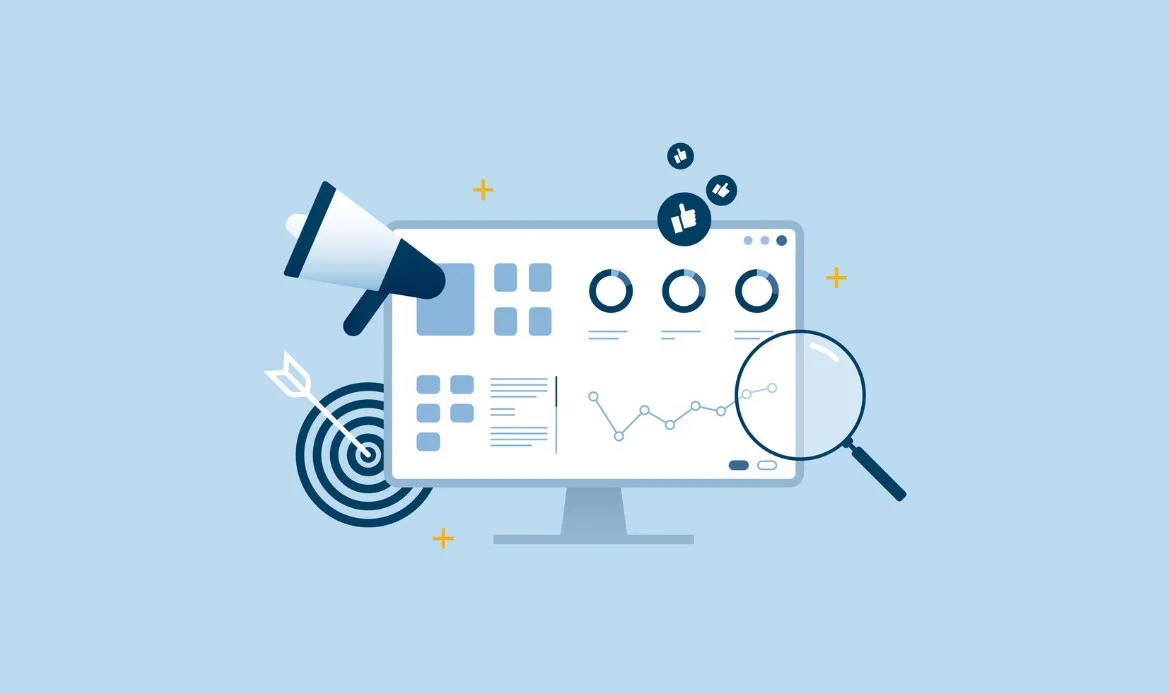 To assess your campaign’s effectiveness, the Influencer Marketing Guide 2025 recommends monitoring key performance indicators (KPIs) such as engagement rates, click-through rates, and conversion rates. These metrics offer valuable insights into how well your campaign is performing and where improvements can be made.
To assess your campaign’s effectiveness, the Influencer Marketing Guide 2025 recommends monitoring key performance indicators (KPIs) such as engagement rates, click-through rates, and conversion rates. These metrics offer valuable insights into how well your campaign is performing and where improvements can be made.
Trends and Predictions for 2025
- Video Dominance: Video content is expected to continue its rise.
- Sustainability and Social Responsibility: Consumers are placing value on ethical brands.
- Long-Term Partnerships: Brands are shifting toward ongoing influencer collaborations.
Influencer Marketing Tools and Platforms
Influencer marketing benefits from various tools and platforms for influencer discovery, campaign management, and performance tracking. Consider options like AspireIQ, Influencity, and Upfluence to streamline your influencer marketing efforts.Challenges and Pitfalls to Avoid

Influencer marketing benefits from various tools and platforms for influencer discovery, campaign management, and performance tracking. Consider options like AspireIQ, Influencity, and Upfluence to streamline your influencer marketing efforts.
By following the insights shared in the Influencer Marketing Guide 2025, you can better understand these common pitfalls, plan proactively, implement best practices, and maintain a smooth, secure, and efficient website.
Frequently Asked Questions About Influencer Marketing in 2025
What is influencer marketing and how does it work?
Influencer marketing involves partnering with individuals who have a strong online presence to promote your brand, products, or services. By leveraging their audience and credibility, businesses can increase reach, engagement, and conversions effectively.
What are the key benefits of influencer marketing in 2025?
The main benefits include building brand awareness, reaching highly targeted audiences, enhancing trust and authenticity, and driving sales. With evolving social media trends, influencer marketing remains a powerful tool for modern digital campaigns.
How do I choose the right influencer for my brand?
Choose influencers whose audience aligns with your target market, evaluate their engagement rate and authenticity, and consider their niche relevance. Micro-influencers and macro-influencers offer different advantages depending on your campaign goals.
Conclusion
In conclusion, this Influencer Marketing Guide 2025 shows how influencer collaborations will continue to shape brand growth in the digital era. The power of influencer marketing lies in its authenticity and its ability to connect with audiences on a personal level. As our ultimate guide for 2025 comes to a close, we’ve explored the essence of influencer marketing, from its humble beginnings to the impactful present, and the promising future it holds.
In this evolving realm, influencer marketing is not a one-size-fits-all approach but a strategy that adapts to consumer preferences, industry changes, and technological advancements. Successful influencer marketing campaigns require a deep understanding of the market, the right choice of influencers, a strategic mindset, and the willingness to embrace emerging trends.
Unlock the Power of Influencer Marketing in 2025!
Discover how to elevate your brand presence and drive engagement through influencer marketing strategies built for the modern digital era. Combine authentic storytelling with a professional WordPress theme tailored for marketing, agencies, or eCommerce growth.


